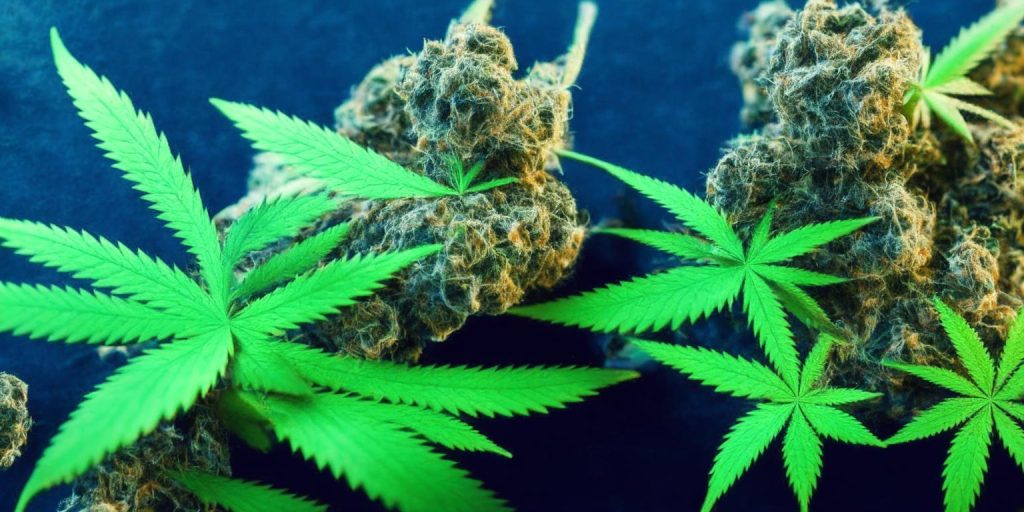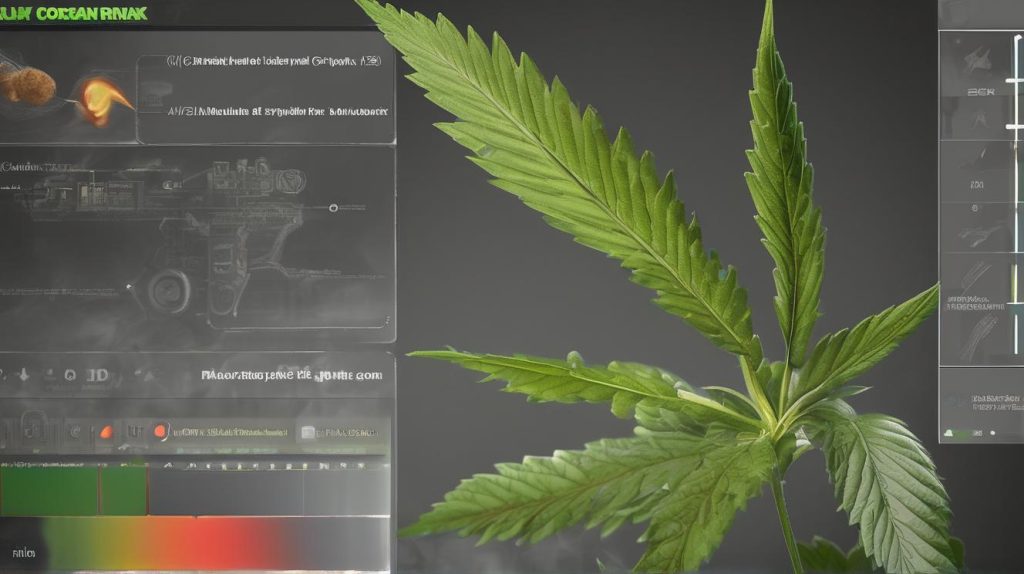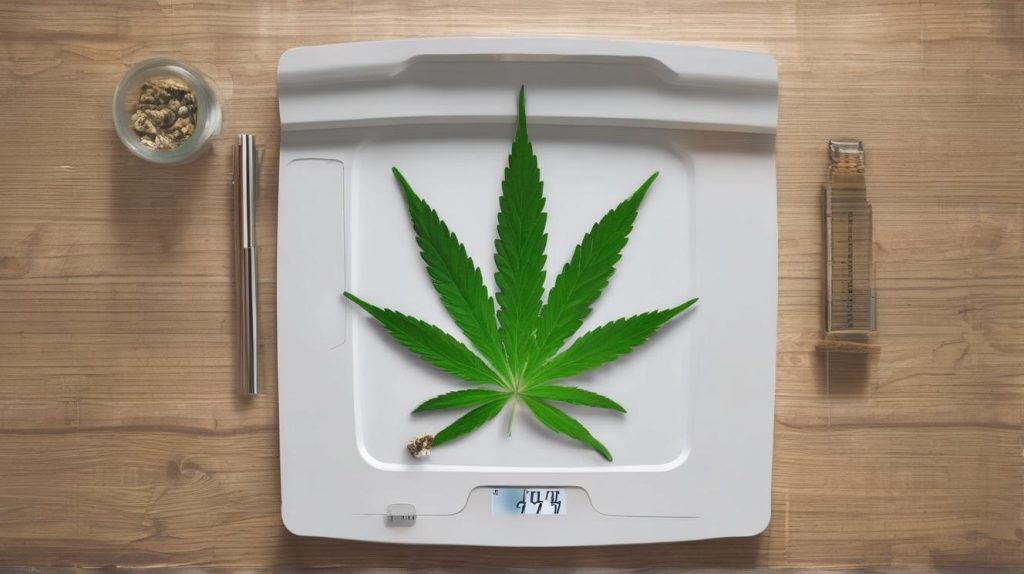Understanding the different types of cannabis strains is crucial for both recreational users and medicinal consumers. The effects, flavors, and benefits of each strain can vary significantly, making it essential to identify the correct type for your specific needs. This article will guide you on how to distinguish between various cannabis strains, helping you make informed decisions about your cannabis consumption. We’ll delve into the characteristics, origins, and uses of popular strains, providing a comprehensive overview of this fascinating aspect of the cannabis world. Whether you’re a novice or a seasoned user, this article will deepen your understanding of cannabis strains and their unique properties.
Rely on Your Sense of Smell
The ability to identify cannabis strain types is an essential skill, especially in light of California’s Proposition 64, which legalized recreational cannabis inside the state for adults aged 21 and over. One key factor in distinguishing these strains, such as the popular Blue Haze, is your sense of smell.
Each cannabis strain emits a unique aroma due to its specific blend of terpenes, and organic compounds that influence not only the scent but also the effects and benefits of the strain. For instance, the sharp, sweet citrus scent of Green Crack helps users identify this potent sativa plant. Similarly, Blue Haze’s distinctive fragrance of sweet berries mixed with earthy undertones sets it apart from other strains.
Your nose can guide you in identifying whether the strain has been properly cured and stored. A well-cured strain will have a rich, strong aroma, indicating high quality and proper handling. Conversely, a mild or nonexistent scent may signify a poorly cured strain or subpar storage conditions.
It’s worth noting that these aromatic profiles can vary even within the same strain, influenced by factors like growing conditions and curing methods. Therefore, one should also consider visual and tactile cues alongside the olfactory ones when identifying cannabis strains.
By learning to trust your sense of smell, you can better navigate the diverse world of cannabis, finding the strain that best suits your preferences and needs. Whether you’re a novice user or a seasoned connoisseur, developing this skill can enhance your cannabis experience, ensuring that you get the most out of the burgeoning opportunities provided by the legalization of recreational cannabis inside the state.
Employ Your Sense of Taste
Identifying strain types, such as Blue Haze and Green Crack, is a multi-sensory experience. Apart from visual cues from Getty Images or the green bud color, your taste buds play a crucial role. Each strain offers a unique flavor profile due to varying THC and CBD levels. For instance, Blue Haze leaves a sweet, berry-like taste, while Green Crack has a tangy, citrus flavor. As recreational cannabis is now legalized inside the state, understanding these subtle differences can help you select your preferred cannabis strain, enhancing your overall experience.
Discern the Impact of the Strain
The impact of different cannabis strains on the user is a significant identifier. Each strain induces unique effects, ranging from relaxation and calm to increased focus and creativity. Some strains might cause you to feel euphoric and energized, while others might induce a sense of tranquillity and contentment. Observing these effects can help you identify the strain type and choose one that aligns with your needs or preferences. By discerning the effects of each strain, you can tailor your cannabis experience to your personal needs.
Profiling the Bud
Bud profiling is an essential part of identifying strain types. It involves observing the physical characteristics of the cannabis flower. For instance, strains including Blue Haze and Green Crack have distinctive appearances that make them easily recognizable. Blue Haze typically exhibits a rich, blue color mixed with shades of green, while Green Crack is known for its bright, emerald green hue.
California’s Proposition 64 has opened the door for adults to legally explore these different strains inside the state. This has led to a surge in interest in the unique properties of sativa plants and other cannabis varieties. Whether you’re new to cannabis or an experienced user, bud profiling allows you to better understand the diversity of strains available and choose one that aligns with your preferences. Remember, each strain offers a distinct experience and effect, so take your time to learn and make informed choices.
Understanding the Varieties of Cannabis
The world of cannabis is as diverse and unique as the people who consume it. Understanding the varieties of cannabis, often referred to as cannabis strains, can help you navigate this vast world and choose the right product for your needs.
Cannabis strains are the different varieties of the Cannabis sativa plant. Each strain has its unique combination of properties, such as flavor, aroma, color, and the type and quantity of cannabinoids it contains. These factors collectively determine the effect that a particular strain will have on the user.
Identifying cannabis strains can seem daunting at first, but with a bit of knowledge and observation, it becomes an interesting journey of discovery. There are three main types of cannabis strains: Sativa, Indica, and Hybrid. Sativa strains are known for their uplifting and energizing effects, making them ideal for daytime use. Indica strains, on the other hand, promote relaxation and are often used for pain relief. Hybrids, as the name suggests, are a mix of Sativa and Indica strains, offering a balance of effects.
Noticing the physical characteristics of the strain, such as the color, shape, and size of the buds, can give you clues about its type. Furthermore, smelling the bud can also provide hints about the strain – some might have a fruity aroma while others may smell earthy.
In conclusion, identifying cannabis strains involves observing their physical characteristics, understanding their effects, and engaging your senses. With practice, you’ll be able to identify different strains and find the ones that best suit your preferences.
Contrasting THC and CBD
“Contrasting THC and CBD” is an essential part of understanding how to identify strain types in cannabis. These two primary compounds found in cannabis, namely THC (Tetrahydrocannabinol) and CBD (Cannabidiol), possess different characteristics and effects.
One of the key steps in distinguishing between various strains, such as Blue Haze and Green Crack, is observing the bud color. For instance, strains like Green Crack often exhibit a vibrant green hue. Getty Images provides a rich visual resource for referencing these color variations.
The legalization of recreational cannabis inside the state for adults, particularly under California’s Proposition 64, has sparked a surge in interest in the unique properties of sativa plants and other cannabis varieties. This legislation has enabled both seasoned users and newcomers to delve deeper into the world of cannabis strains.
Each strain offers a distinct experience, largely influenced by its THC and CBD content. THC is known for its psychoactive effects, altering the user’s mental state, while CBD is non-psychoactive, offering potential therapeutic benefits without the ‘high’.
Understanding the balance between THC and CBD in a strain can guide users toward a more personalized cannabis experience. Whether you’re seeking relaxation, pain relief, or a creative spark, knowing how to identify strains allows you to tailor your cannabis use to your specific needs. Remember, it’s not just about the strain type but also about the individual compounds that make up the strain.
Distinguishing Between Sativa and Indica
In the vast world of cannabis, the ability to distinguish between Sativa and Indica is a fundamental skill. These two major types of cannabis plants have distinct characteristics and effects, making each suitable for different uses.
Sativa plants are typically tall and slim with narrow leaves. They are known for their energizing and uplifting effects, making them ideal for daytime use or when you need to be productive. Sativa strains often have a high THC content and lower CBD levels, resulting in a more cerebral, mood-enhancing high. The flavors and aromas are usually described as fruity, sweet, or spicy.
On the other hand, Indica plants are shorter and bushier with broad leaves. They are renowned for their relaxing and calming effects, which makes them perfect for evening use or those seeking pain relief or better sleep. Indica strains commonly have a higher CBD content relative to THC, offering a more body-focused high. The flavors and aromas of Indica strains are often described as earthy, skunky, or pungent.
However, it’s important to note that the effects of individual strains can vary widely due to factors like the plant’s genetic lineage, cultivation methods, and processing techniques. Therefore, while the Sativa-Indica classification provides a useful starting point, it’s not the only factor to consider when choosing a strain.
Another critical aspect of identifying strain types is examining the buds themselves. The color, shape, size, and trichome coverage of the buds can provide valuable clues about the strain’s identity and potency. For instance, a dense coating of trichomes (the tiny, crystal-like structures on the surface of the bud) usually indicates a high-potency strain.
In conclusion, understanding how to identify cannabis strain types involves a combination of knowledge about Sativa and Indica plants, observation of the buds’ physical characteristics, and awareness of the potential effects. With this skill, you can navigate the diverse world of cannabis with confidence and find the strains that best meet your needs.
Trending Cannabis Varieties
As the world of cannabis continues to expand, keeping up with trending cannabis varieties can be a fascinating endeavor. Each strain, whether it’s Wedding Cake, Gelato, or Blue Dream, carries its own unique set of characteristics that differentiate it from others.
The preferred cannabis strains often depend on individual preferences and desired effects. For instance, a strain like Gorilla Glue, known for its high potency, might be favored by those seeking strong relaxation or pain relief. On the other hand, a sativa-dominant strain like Durban Poison, recognized for its uplifting effects, could be the go-to choice for those needing an energy boost or creativity spark.
Identifying these popular cannabis strains involves understanding their individual properties and effects. It’s about observing the physical characteristics of the bud, such as color and trichome coverage, and being aware of the potential effects, which can range from energizing to calming. With this knowledge, you can navigate the diverse landscape of cannabis strains and find those that best align with your needs and preferences.
Summary
Understanding the vast world of cannabis strains can be a daunting task. Each strain carries its own unique set of properties, effects, and characteristics that differentiate it from others. The process of identifying these strains involves careful observation of several factors such as plant type (Sativa, Indica, or Hybrid), THC and CBD content, and physical characteristics of the bud. A key identifying feature often lies in the bud color, which can range from a vibrant green to a deep purple depending on the strain.
In recent years, the legalization of recreational cannabis inside the state for adults has significantly broadened the scope of available strains. Strains like Blue Haze and Green Crack have gained popularity due to their distinct properties and effects.
Blue Haze, a hybrid strain known for its uplifting and creative effects, boasts a beautiful blue hue and a sweet berry aroma. On the other hand, Green Crack, a potent sativa strain, is recognized for its energizing effects and vibrant green buds.
The bud color, which can include varying shades of green, serves as a key identifier in differentiating between these strains. It’s fascinating to observe how the legalization of cannabis inside the state has ushered in a new era of exploration and understanding of these diverse cannabis strains. As we continue to learn more about these strains, we can better tailor our cannabis experiences to our individual needs and preferences.
Conclusion
In conclusion, the article “We Need to Know: The Most Popular Strains of Cannabis and Why People Choose Them – A Spokesman-Review Guide to Cannabis Strains 101” provides a comprehensive overview of various cannabis strains, their unique characteristics, and the reasons behind their popularity. It covers a wide range of strains from Indica to Sativa and hybrids, offering insights into their effects and benefits. The article also emphasizes the importance of understanding the traits of different strains to make informed choices. With the increasing legalization and acceptance of cannabis, this knowledge becomes even more significant for both beginners and experienced users. The guide serves as an essential resource for anyone looking to explore the diverse world of cannabis strains.




